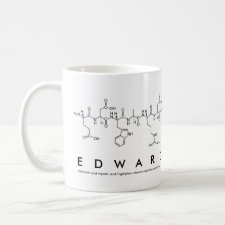
Authors: Hassanzadeh-Khayyat M, Lai EPC, Kollu K, Ormeci B
Article Title: Degradation of Diclofenac in Molecularly Imprinted Polymer Submicron Particles by UV Light Irradiation and HCl Acid Treatment.
Publication date: 2011
Journal: Journal of Water Resource and Protection
Volume: 3
Issue: (9)
Page numbers: 643-654.
DOI: 10.4236/jwarp.2011.39074
Alternative URL: http://www.SciRP.org/journal/jwarp
Abstract: A new molecularly imprinted polymer (MIP) was synthesized by precipitation polymerization using diclofenac (DFC) as a template. Binding characteristics of the MIP particles were evaluated by equilibrium binding experiments. DFC-MIP aqueous suspension and non-imprinted polymer (NIP) suspension were ex-posed to monochromatic UV light (253.7 nm) from low-pressure mercury lamps. UV-visible spectropho-tometry (especially absorbance at 276 nm) showed that the DFC inside MIP particles degraded completely. After DFC-MIP suspension exposure to UV light the particles were completely regenerated after washing with water at least six times. The regenerated MIP particles rebounded considerable amount of DFC (approximately 88% removal of 44 ppm DFC). The stability of DFC was examined in the presence of various concentrations of hydrochloric acid (0.025 to 125 mM). Experimental results showed that degradation of DFC was efficient, depending on the acid concentration as well as the treatment time. However, there was no re-binding of DFC by the MIP particles after HCl treatment (and DDW washing) when exposed to DFC for 24 hours.
Template and target information: diclofenac, DFC
Author keywords: diclofenac, molecularly imprinted polymer, submicron particles, UV irradiation, degradation, Acid Treatment



Join the Society for Molecular Imprinting

New items RSS feed
Sign-up for e-mail updates:
Choose between receiving an occasional newsletter or more frequent e-mail alerts.
Click here to go to the sign-up page.
Is your name elemental or peptidic? Enter your name and find out by clicking either of the buttons below!
Other products you may like:
 MIPdatabase
MIPdatabase









